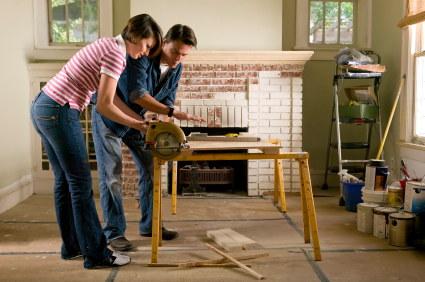How to do Home improvements on a budget
Quick steps to fixing up for less
Tackling projects around the house can be both scary and exciting. We all want to have the showpiece home that you see in magazines, but are we willing to invest the time, effort and money? Home improvements can be tricky, especially if you can't do them yourself - and even if you think you can, things can get complicated and expensive quickly. This is where organization, research and planning come in.

Create a Wish List
The road to a spread in Better Homed and Gardens is a long one - so the best place to start is to make a wish list. I would suggest organizing your list by room and then itemizing each improvement (i.e. replace the flooring, replace cabinets, etc). Once you have completed your list, you should ask yourself the below questions
1) Will the improvements add value to my home?
This is a critical question, especially if you're going to be working with a tight budget. There are two types of value you can add - the monetary kind that will increase the selling price your home and the intangible value that comes from making it a better place to live in. While you review your list, be sure to keep both values in mind. Improvements that don't do either are a waste of time and money and should be crossed off the list. For example, updating a kitchen or bathroom will likely increase a home's value while putting in a pool may take away from it. Do a little research about your local area real estate to help understand which is which.

2) Is this an overhaul or a facelift?
This is another great way to help prioritize and get the most out of your budget. Review each item on your list to help determine if you need to completely gut the space or if you can keep certain aspects of the room and update others. A lot of times some small updates or a new coat of paint or a new light fixture will make a huge difference. On the other hand, if there is damage or broken items an overhaul may be the only option.
3) Do Your Research
Another way to decide where to spend your budget is to do some online research to understand the price tag for each improvement. If you've decided that certain projects require an overhaul that you aren't comfortable taking on yourself, work with local contractors to get estimates. Be sure to ask for itemized estimates - even if you have to work with a contractor, sometimes you can realize cost savings by purchasing the materials yourself or taking on some of the finishing work (like painting or final details). Remember YAY! Savings members, shop around.
4) Do It Yourself or Consider Swapping Skills
As you'll probably learn during your research phase - the biggest cost of most projects is the labor, so the more you can do yourself the farther your budget will go. If you're afraid you don't have the skills to do the project yourself look for someone who does and is willing to do it for you in exchange for your doing something for them. You probably know friends and family who would be very happy with this arrangement.
(Continued On Next Page)
Show more